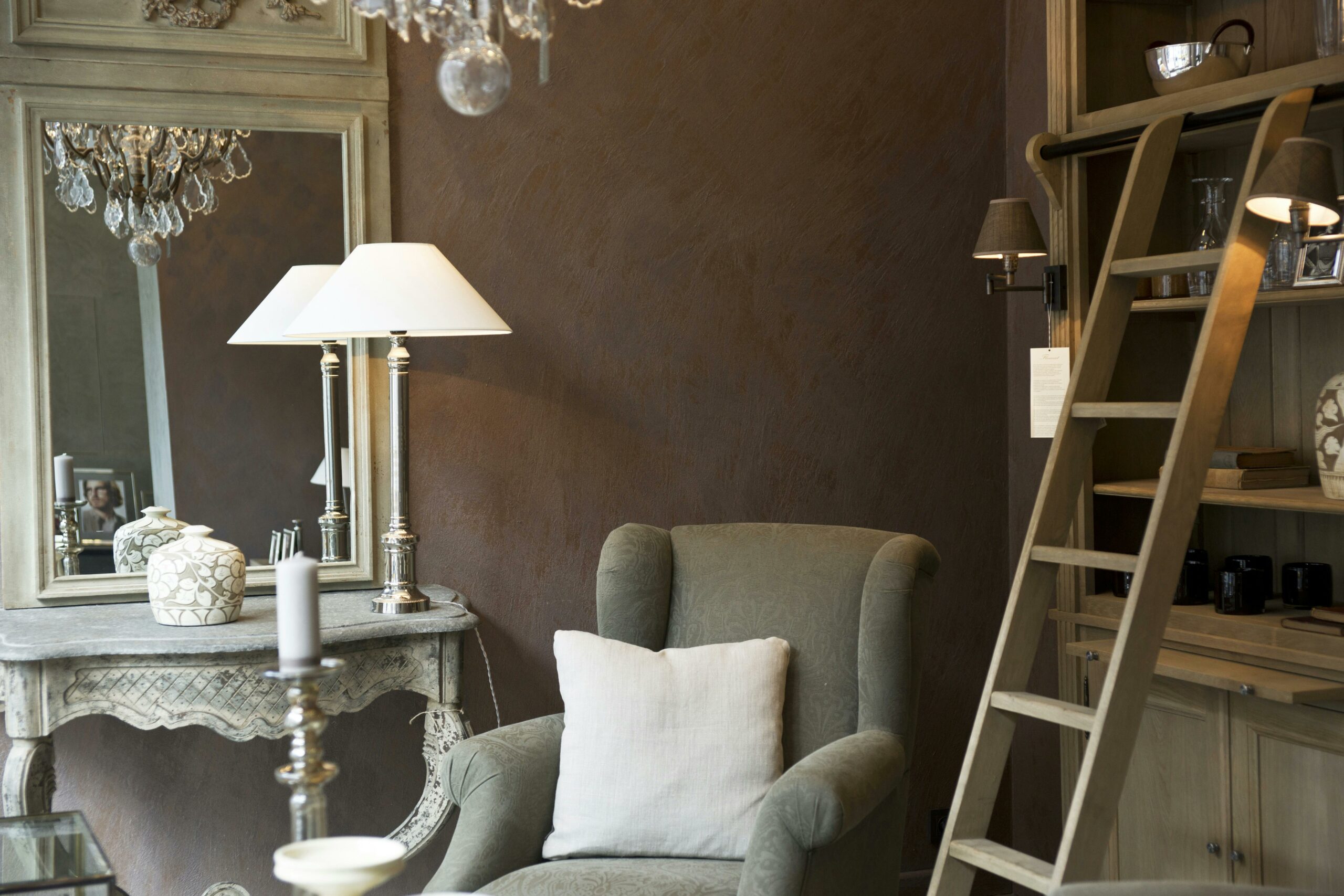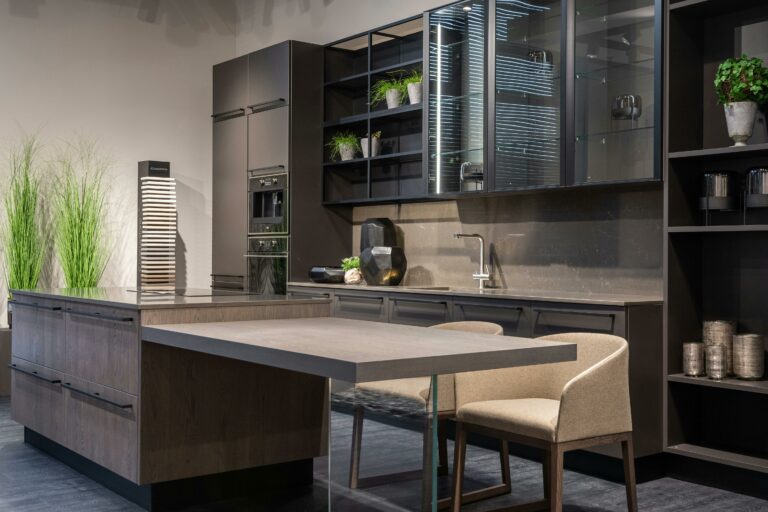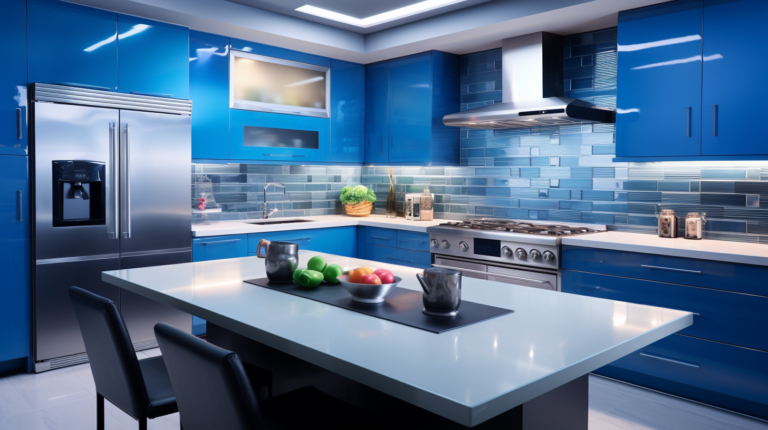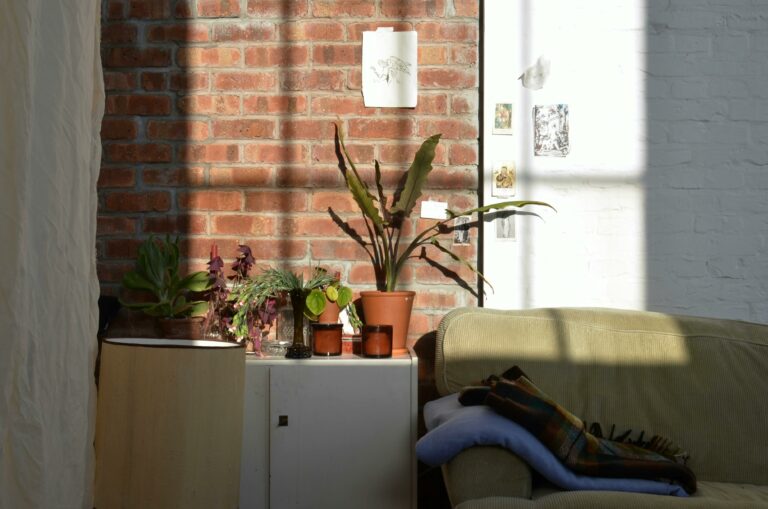Find Your Interior Design Style: Discover What Fits You
Are you tired of coming home to a space that doesn’t reflect your personality? Do you dream of transforming your living room into a cozy haven or your bedroom into a serene retreat? Finding your interior design style is the key to creating a space that feels like home.
Your home is a reflection of your personality and personal preferences. It’s where you spend a significant amount of your time, so it’s essential to design it in a way that makes you feel comfortable, relaxed, and inspired. Whether you’re starting from scratch or looking to refresh your existing space, discovering your interior design style is the first step towards achieving a home that truly reflects who you are.
In this article, we’ll explore the importance of determining your interior design style and how it can enhance your living space. We’ll also provide you with practical tips and ideas to help you identify your personal style and match it with your lifestyle. So, let’s dive in and find out what design style fits you best!
Table of Contents
- 1 Importance of Determining Your Interior Design Style
- 2 Identifying Your Interior Design Style
- 3 Different Types of Interior Design Styles
- 4 Matching Your Lifestyle with Your Design Style
- 5 Enlisting Professional Help When Needed
- 6 Tips on Merging Different Design Styles
- 7 Conclusion
- 8 Frequently Asked Questions
Importance of Determining Your Interior Design Style
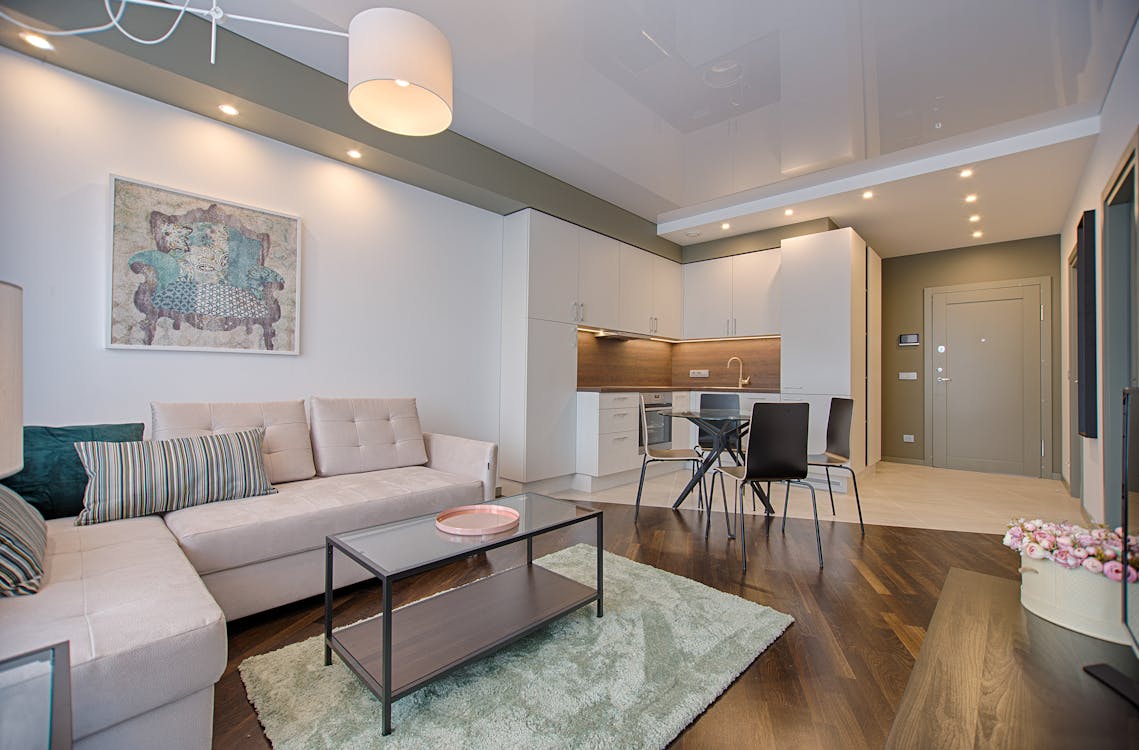
When it comes to creating a beautiful and functional home, determining your interior design style is of utmost importance. Your interior design style is a reflection of your personality and preferences, and it sets the tone for the entire space. From colors and patterns to furniture and accessories, your design style guides every decision you make in transforming your house into a home.
Understanding Personal Preferences
Before diving into the world of interior design style, it’s essential to understand your personal preferences. What makes you feel most at ease in a space? Do you prefer clean lines and minimalism, or are you drawn to bold colors and eclectic patterns? Taking the time to consider your personal style will help you create a cohesive and inviting home that truly speaks to you.
To determine your interior design style, start by examining your existing wardrobe. Our clothing choices often give insight into the colors, textures, and patterns that resonate with us. Do you find yourself gravitating towards classic neutrals and tailored silhouettes or vibrant hues and playful prints? Take note of the colors and patterns that crop up time and time again, as they can serve as a starting point for your interior design journey.
Reflecting Your Personality in Your Home
Your home should be a reflection of who you are and what you love. It’s a space to showcase your unique personality and tell your story. Whether you’re an adventurous spirit, a lover of nature, or a minimalist at heart, your interior design style should mirror these aspects of yourself.
Consider incorporating personal mementos, artwork, or travel souvenirs that hold special meaning to you. These elements will not only add character to your space but also serve as conversation starters for guests. A well-designed home should make you and your visitors feel comfortable and inspired, with every corner telling a tale.
The Impact of an Aligned Design Style
When your interior design style aligns with your personal preferences and personality, the impact on your daily life can be significant. Here are some of the benefits of determining your design style:
- Cohesion: A consistent design style creates a cohesive and harmonious flow throughout your home. It allows each room to blend seamlessly into the next, creating a sense of unity and balance.
- Comfort: When your living space reflects your personal style, it becomes a place of comfort and refuge. You’ll feel more at ease and relaxed in a space that feels like an extension of yourself.
- Efficiency: Having a clear design style helps streamline the decision-making process when selecting furniture, accessories, and décor. You’ll be better equipped to choose pieces that fit within your aesthetic, removing the stress of indecision.
- Well-being: Surrounding yourself with a design style that resonates with your personality can have a positive impact on your overall well-being. Your home becomes a sanctuary that fosters positivity and supports your lifestyle.
By determining your interior design style, you lay the foundation for creating a home that not only looks beautiful but also feels authentically you. So take the time to explore your personal preferences, reflect on your personality, and embrace your unique style. Your journey to designing the perfect home starts with understanding who you are and what makes you feel truly at home.
Identifying Your Interior Design Style

Have you ever walked into a room and instantly felt a sense of calm or excitement? That’s the power of interior design. The way a space is decorated can have a profound impact on how we feel and interact with our environment. Whether you’re moving into a new home or looking to give your current space a refresh, it’s important to identify your interior design style. This will not only help you create a cohesive and visually appealing space but also ensure that it reflects your personality and brings you joy every time you step through the door. Here are some tips on how to identify your interior design style:
Trust Your Instincts
When it comes to interior design, your instincts are your best guide. Take a moment to reflect on what makes you feel comfortable and inspired. Pay attention to the colors, patterns, and textures that catch your eye. Do you find yourself drawn to minimalist spaces with clean lines, or are you more inclined towards cozy and eclectic interiors? Trusting your instincts will help you uncover the design style that resonates with you on a deeper level.
Collecting Ideas
One of the best ways to identify your interior design style is by collecting ideas and inspiration. Start by creating a visual mood board or Pinterest board where you can gather images that appeal to you. These could be magazine clippings, photos from home decor websites, or even screenshots from social media. As you collect more and more ideas, you’ll start to notice patterns and recurring themes that will give you valuable insights into your personal design preferences.
Look at Your Wardrobe
Believe it or not, your wardrobe can provide valuable clues about your interior design style. Take a look at the colors and patterns you tend to gravitate towards when it comes to your clothing choices. Are you drawn to neutral tones and classic styles, or do you prefer bold colors and trendy pieces? Your fashion preferences can be a great starting point for determining what aesthetic you might enjoy in your living space.
Analyze Your Travel Souvenirs
Traveling exposes us to a variety of cultures, landscapes, and design styles. Take a moment to analyze the souvenirs you’ve brought back from your travels. Do you have a collection of vibrant textiles from Mexico or Morocco? Or perhaps you’ve picked up delicate ceramics from Japan or Scandinavia? These souvenirs can provide insight into the design styles that intrigue and inspire you.
Check Your Saved Photos
In today’s digital age, it’s likely that you have a collection of saved photos on your phone or computer. Take a look through these images and see if any common themes emerge. Do you tend to save photos of sleek, modern interiors or rustic, farmhouse-inspired spaces? This exercise will give you a glimpse into your subconscious design preferences and guide you towards your ideal interior style.
Remember, there are no right or wrong answers when it comes to interior design. It’s all about creating a space that reflects your unique taste and makes you feel at home. By trusting your instincts, collecting ideas, analyzing your wardrobe and travel souvenirs, and checking your saved photos, you’ll be well on your way to identifying your interior design style. Happy decorating!
Different Types of Interior Design Styles
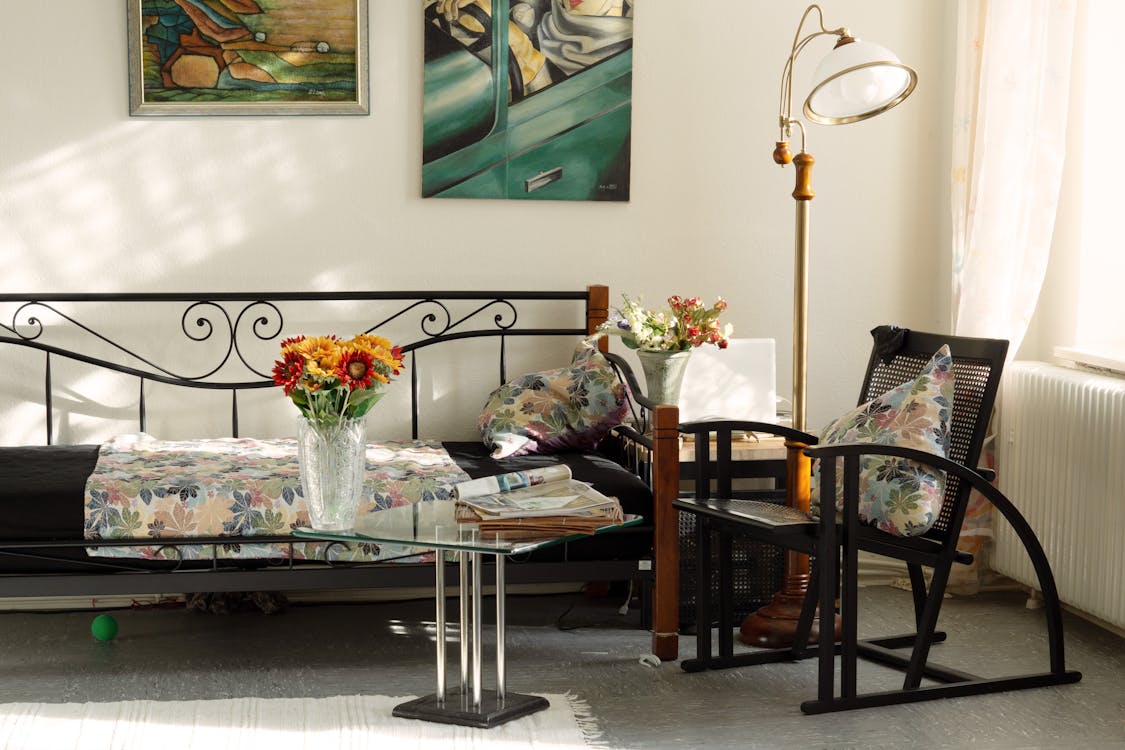
When it comes to decorating your home, it’s essential to choose an interior design style that reflects your personality and creates a space that is both functional and visually appealing. With so many different design styles to choose from, it can be overwhelming to know where to start. In this article, we will explore ten popular interior design styles, ranging from minimalist to contemporary, to help you find the perfect style for your home.
Minimalist
Minimalist interior design is all about simplicity and clean lines. It embraces the idea of “less is more,” focusing on decluttering and creating a serene, uncluttered space. Key features of minimalist design include neutral color palettes, sleek furniture with simple geometric shapes, and plenty of natural light. Minimalist interiors often incorporate elements of nature, such as indoor plants, to bring a sense of tranquility into the space.
Bohemian
Bohemian, or boho, interior design is a colorful, eclectic style that embraces a free-spirited, unconventional vibe. It combines elements from various cultures and eras, featuring vibrant colors, bold patterns, and a mixture of textures. Bohemian interiors are often characterized by mismatched furniture, cozy textiles like rugs and throw pillows, and an abundance of plants. This style encourages self-expression and personalization through the use of unique decor pieces and artwork.
Mid-Century Modern
Mid-century modern design pays homage to the design trends of the 1950s and 1960s. It is known for its sleek lines, organic shapes, and minimalist approach. This style often features furniture with tapered legs, clean-lined upholstery, and natural materials such as wood and leather. Mid-century modern interiors often incorporate pops of bold colors, geometric patterns, and iconic statement pieces from the era.
Industrial
Industrial interior design draws inspiration from warehouse and factory settings, creating a raw and edgy aesthetic. This style embraces exposed brick walls, metal accents, and unfinished materials like concrete and exposed pipes. Industrial interiors often feature open floor plans, high ceilings, and large windows to maximize natural light. Furniture in this style tends to have a distressed, worn-in look, adding to the overall industrial charm.
Farmhouse
Farmhouse design evokes a warm and cozy feeling, reminiscent of a country cottage. This style emphasizes natural materials, simplicity, and rustic charm. Farmhouse interiors feature white or neutral color palettes, wooden furniture, and vintage accents. Decorative elements like shiplap walls, apron sinks, and barn doors are commonly found in farmhouse-style homes. This design style aims to create a comfortable and inviting atmosphere, perfect for gatherings with family and friends.
Nordic
Nordic, or Scandinavian, design focuses on minimalism, functionality, and simplicity. It embraces clean lines, light colors, and natural materials. Nordic interiors often feature white walls, light wood floors, and a mix of modern and vintage furniture. This style prioritizes creating a cozy and inviting atmosphere through the use of textures like wool and fur, as well as soft lighting and natural elements.
Eclectic
Eclectic interior design is all about mixing different styles, colors, and patterns to create a unique and personalized space. This style allows for creativity and self-expression, as it combines elements from various design periods and cultures. Eclectic interiors often feature bold colors, statement pieces, and unexpected combinations of furniture and accessories. This design style encourages collecting and showcasing cherished items that reflect the homeowner’s personality and interests.
Coastal
Coastal design captures the essence of beachside living, creating a relaxed and airy atmosphere. This style often incorporates a color palette of blues, whites, and neutrals, reminiscent of the ocean and sandy beaches. Coastal interiors feature light and breezy fabrics, natural materials like rattan and wicker, and nautical-inspired decor. This design style aims to bring the serenity of the coast into your home, creating a tranquil and inviting space.
Traditional
Traditional interior design is inspired by classic European styles and emphasizes elegance and sophistication. This style features rich colors, intricate patterns, and luxurious fabrics. Traditional interiors often showcase ornate furniture, formal window treatments, and detailed moldings. This design style aims to create a timelessly elegant space that exudes a sense of refinement and heritage.
Contemporary
Contemporary design is all about what is current and trending in the world of interior design. It is a fluid and ever-evolving style that incorporates elements from various design periods and styles. Contemporary interiors often feature clean lines, neutral color palettes, and a blend of modern and traditional furniture. This design style embraces new materials, technologies, and innovations to create a fresh and forward-thinking space.
Now that we’ve explored ten different interior design styles, you have a better understanding of the various options available to you. Remember, there are no strict rules when it comes to design, so feel free to mix and match elements from different styles to create a space that is uniquely yours. Happy decorating!
Matching Your Lifestyle with Your Design Style

When it comes to designing your living spaces, it’s essential to consider your lifestyle. After all, your home should be a reflection of who you are and how you live. Matching your lifestyle with your design style can result in a harmonious and functional space that truly suits your needs. Here are a few factors to consider when finding the perfect balance between your lifestyle and your design style:
Family Dynamics and Living Spaces
If you have a family, the layout and functionality of your living spaces become even more important. Consider the dynamics of your family and how you typically spend time together. Do you enjoy gathering in the kitchen for meals? Do you need a designated play area for your children? Understanding your family’s needs will help you choose a design style that accommodates everyone.
- Open Concept Spaces: If you enjoy having a seamless flow between rooms and want to encourage interaction among family members, an open concept design style might be a great fit. This layout allows you to have a central space where conversations can flow freely and activities can take place.
- Multifunctional Furniture: For families with limited space, multifunctional furniture can be a lifesaver. Look for pieces that can serve multiple purposes, such as ottomans with hidden storage or dining tables that can expand to accommodate guests. This way, you can maximize the functionality of your living spaces without compromising on style.
Consider Your Hobbies
Your hobbies and interests can greatly influence how you use your living spaces. Whether you’re an avid reader, a home chef, or a fitness enthusiast, it’s important to incorporate elements that support your hobbies into your design style.
- Cozy Reading Nook: If you love curling up with a good book, consider creating a cozy reading nook in your home. A comfortable armchair or a window seat with plenty of natural light can provide the perfect spot for relaxation and escapism.
- Kitchen Design: For those who enjoy cooking and entertaining, a well-designed kitchen is a must. Consider incorporating features like a spacious countertop, ample storage, and high-quality appliances to make your culinary experiences more enjoyable.
Functional Aesthetic Vs Visual Aesthetic
When it comes to design styles, there are two main considerations: functional aesthetics and visual aesthetics. While they are not mutually exclusive, striking a balance between the two can lead to a beautifully designed space that also serves your practical needs.
- Functional Aesthetic: This approach prioritizes practicality and functionality. It focuses on designing spaces that are efficient, organized, and easy to use. If you value functionality above all else, consider design styles like minimalism or Scandinavian design, which emphasize clean lines, clutter-free spaces, and thoughtful storage solutions.
- Visual Aesthetic: On the other hand, visual aesthetics prioritize the overall look and feel of a space. This approach is all about creating a visually appealing and aesthetically pleasing environment. If you’re someone who appreciates art, color, and unique design elements, you might be drawn to styles like bohemian, eclectic, or mid-century modern.
Remember, finding the right balance between your lifestyle and your design style is a personal journey. Take the time to explore different styles, consider your needs and preferences, and create a home that truly reflects who you are.
Enlisting Professional Help When Needed
Whether you’re a seasoned homeowner or a first-time buyer, there may come a time when you need some extra assistance to transform your living space into the home of your dreams. That’s where interior designers come in. These creative professionals are trained to bring your vision to life and can offer expert guidance on everything from color schemes to furniture placement.
Interior Designers and Their Role
Interior designers play a crucial role in creating a functional and aesthetically pleasing environment. They have a keen eye for design, an in-depth understanding of current trends, and the know-how to navigate the world of furniture, textiles, and materials. Here are a few key reasons why enlisting the help of an interior designer can be a game-changer:
- Expertise: Interior designers have knowledge and expertise that can save you time, energy, and money. They stay updated on the latest design trends, construction techniques, and materials, ensuring that your space is both stylish and functional.
- Space Planning: One of the most important aspects of interior design is space planning. Designers are skilled at maximizing the use of space, whether it’s a small apartment or a sprawling mansion. They take into account traffic flow, furniture arrangement, and storage solutions, creating a layout that optimizes every square inch.
- Color and Texture: Choosing the right colors and textures can completely transform a room. Interior designers can help you create a cohesive color palette that reflects your personality and enhances the overall atmosphere of your home. From paint colors to fabric choices, they have an eye for selecting the perfect hues and textures.
- Budget Management: Contrary to popular belief, hiring an interior designer doesn’t have to break the bank. In fact, working with a designer can actually help you stay within your budget. They have access to a network of suppliers, contractors, and resources that can provide you with cost-effective options without compromising on quality.
How to Communicate Your Preferences
Communication is key when working with an interior designer. You want to ensure that your vision is understood and translated into reality. Here are a few tips to help you effectively communicate your preferences:
- Create Inspiration Boards: Before meeting with a designer, gather inspiration from magazines, websites, and social media platforms like Pinterest. This will give your designer a visual representation of your style and preferences.
- Be Open and Transparent: Don’t hesitate to share your likes and dislikes with your designer. They are there to work with you and create a space that you love. Be open to their suggestions and feedback, and provide constructive input throughout the design process.
- Set a Realistic Budget: Be upfront about your budget constraints from the beginning. This will help your designer tailor their recommendations and selections to fit within your financial boundaries. Remember, a skilled designer can work wonders with any budget.
- Keep an Open Line of Communication: Establish clear lines of communication with your designer. Regular check-ins and updates will ensure that everyone is on the same page and any questions or concerns can be addressed promptly.
By enlisting the help of an interior designer and effectively communicating your preferences, you can embark on a design journey that will transform your living space into a place you truly love. Don’t be afraid to seek professional help when needed – it might just be the missing piece that turns your house into a home.
Tips on Merging Different Design Styles
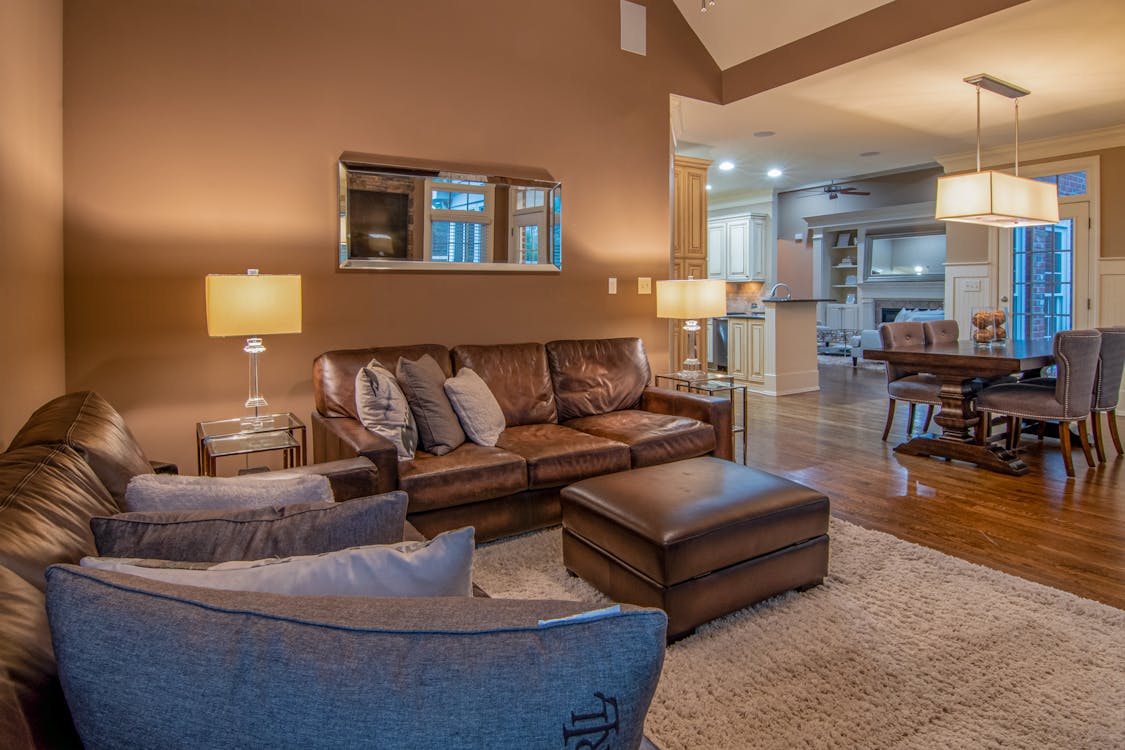
When it comes to interior design, merging different styles can create a unique and eclectic space. Combining elements from various design styles adds personality and depth to a room, making it visually engaging and inviting. However, merging design styles can be challenging if not executed properly. To help you achieve a harmonious blend, here are some tips on merging different design styles seamlessly.
Working with Color Palette
One of the most effective ways to merge different design styles is through a carefully curated color palette. Whether you’re combining contemporary and traditional styles or mixing bohemian and minimalistic elements, a cohesive color scheme can tie everything together. Here are a few tips to keep in mind:
- Neutral Base: Start with a neutral base color, such as white, beige, or gray, to create a unified backdrop for your design. This allows different styles to coexist without clashing.
- Accent Colors: Choose a few accent colors that complement each other and add visual interest to the space. You can pull inspiration from existing elements like artwork, rugs, or furniture pieces.
- Balance and Contrast: Create balance by incorporating both warm and cool tones. Contrast darker hues with lighter shades to add depth and dimension to the room.
Combining Different Furniture Styles
When merging different design styles, furniture plays a crucial role in tying everything together. A well-curated mix of furniture pieces can create a cohesive and visually appealing space. Here are some tips to successfully merge different furniture styles:
- Anchor Piece: Start by selecting an anchor piece that represents the primary design style you want to showcase. This could be a statement sofa, a vintage dining table, or a modern accent chair.
- Complementary Pieces: Choose complementary furniture pieces that bridge the gap between the different styles. Look for common elements like color, texture, or shape that can unify the overall aesthetic.
- Mix and Match: Don’t be afraid to mix and match different furniture styles. Combining pieces from contrasting design styles can add visual interest and create a unique and eclectic look.
Texture and Pattern Balance
Texture and pattern play an essential role in merging different design styles. They add depth, visual interest, and help create a cohesive look. Here are a few tips to balance texture and pattern effectively:
- Mix Textures: Combine different textures like smooth surfaces, rough textiles, and natural materials. This adds visual and tactile interest to the space.
- Layer Patterns: Incorporate patterns in varying scales and styles. By layering patterns, you create a dynamic look that can bridge contrasting design styles.
- Neutralize: Use solid colors and neutral patterns to balance out busier patterns. This creates a visual break and allows the eye to rest.
Remember, merging different design styles is all about finding a balance and creating a space that reflects your personal taste. By following these tips, you can achieve a cohesive and visually stunning interior that seamlessly blends different design elements, creating a space that is uniquely yours.
Also Read : Maximizing Functionality and Style: Minimalist Home Design for Families
Conclusion
In conclusion, finding your interior design style is an essential step in creating a home that reflects your personal preferences and personality. By understanding your own tastes and collecting ideas from various sources, such as your wardrobe, travel souvenirs, and saved photos, you can start to identify the design elements that resonate with you. Exploring different interior design styles, from minimalist to bohemian to traditional, allows you to find the one that suits your lifestyle and aesthetic preferences. And if you ever need guidance or assistance, don’t hesitate to enlist the help of professional interior designers who can bring your vision to life. Remember, your home should be a reflection of who you are, so trust your instincts and have fun experimenting with different styles to create a space that truly feels like yours.
If you’re looking for more inspiration and ideas on interior design, home decoration, and architecture, be sure to visit Arkitecture Today. Our blog is a treasure trove of daily dose architecture, home and interior design, decoration ideas, and inspiration.
Frequently Asked Questions
- How do I find my interior design style?Finding your interior design style involves exploring different design themes, gathering inspiration from magazines, websites, and social media, creating mood boards, and identifying elements and color schemes that resonate with your personal taste and lifestyle.
- What are some popular interior design styles?Some popular interior design styles include contemporary, minimalist, traditional, rustic, industrial, bohemian, Scandinavian, and mid-century modern.
- How can I mix different interior design styles?To mix different interior design styles, start with a cohesive color palette, incorporate elements from each style in a balanced way, focus on a unifying theme or focal point, and experiment with layering textures and patterns.
- What factors should I consider when choosing an interior design style?When choosing an interior design style, consider factors such as your personal taste, lifestyle, budget, the functionality of the space, the architectural elements of your home, and the existing furniture and decor you already have.
- Should I hire an interior designer to help me find my style?Hiring an interior designer can be beneficial if you feel overwhelmed or need professional guidance. They can help you narrow down options, provide expert advice, create a cohesive design plan, and source furniture and decor that fit your style.

